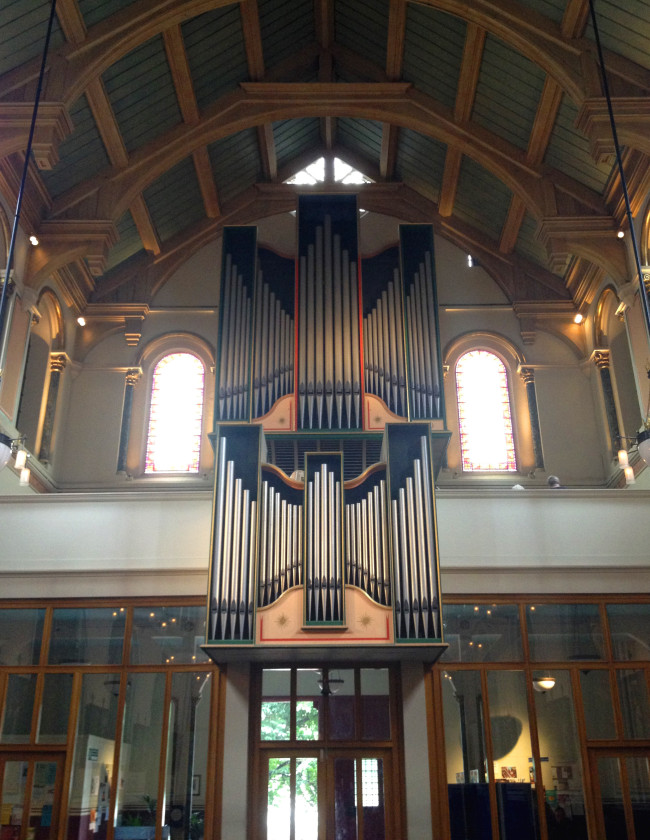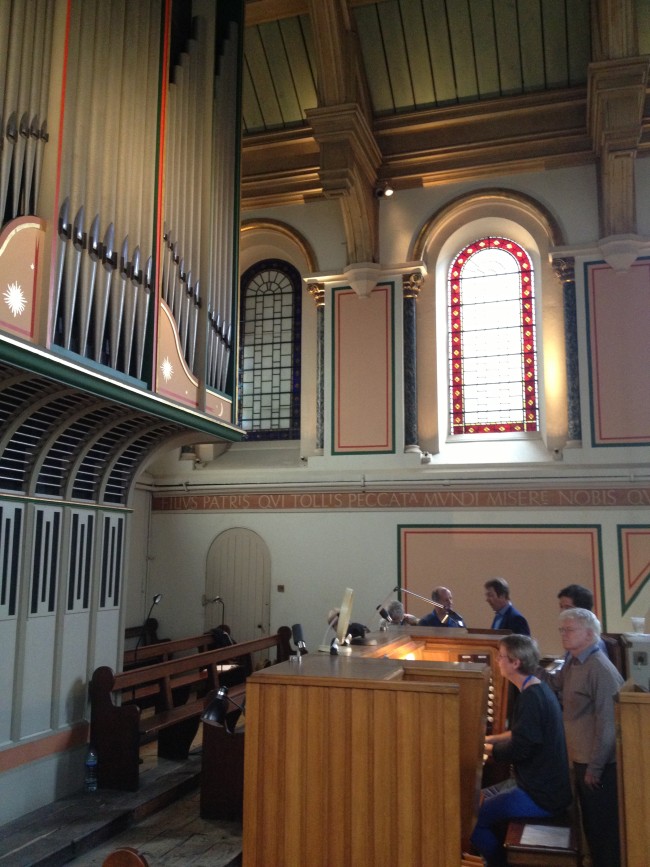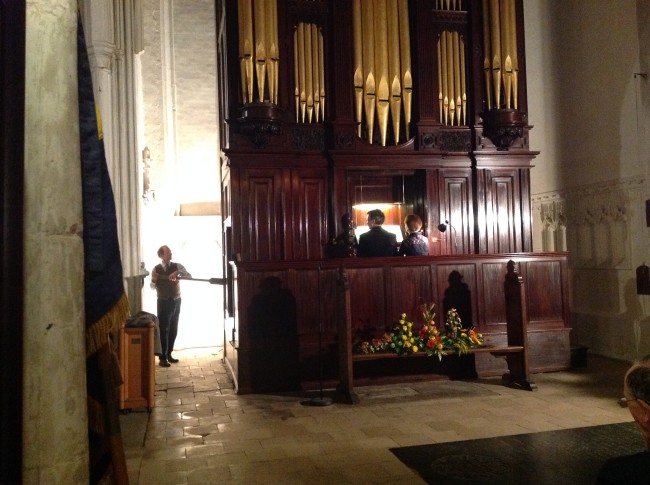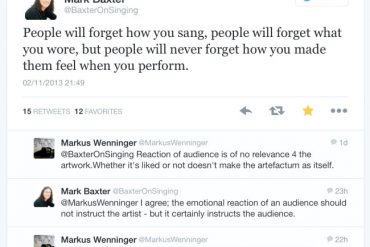Nothing gets church organists going much more than a discussion of hymn playing – a cue for despairing anecdotes about unmusical congregations, and even more unmusical clergy. Simon Williams kept us (reasonably) on track this morning on a Church Music workshop, taking us through hymn registration, length and style of playovers, and general leading of the congregation. He shared with us the Daniel Moult Patent Hymn Extension Method – perfect for organists nervous of improvisation, but needing to supply a minute or two of extra something at the end of the hymn. It goes like this:
If the hymn has finished (but the service business hasn’t quite) find an interesting inner part of a line of the hymn (tenor or alto) and play it alone, or in octaves
Play it again, adding the third above
Play the whole line in four part harmony
Find another interesting inner part
Repeat
Finish the hymn in four part harmony, playing the final cadence at a ceremonial half speed
As you get your confidence, you can vary the technique, perhaps adding a few passing notes, or modulating a bit.
We’re all grateful to Dan for this. (Dan is also teaching on the course, and I’m off to hear him talk about Sweelinck and Scheidermann next.)
We were playing on the 1963 Walker organ at St John the Evangelist, Duncan Terrace, in North London. From its looks and its bright, beefy sound, you might think it was a mechanical action organ of the 60s neo-baroque school, but in fact it’s one of the last electro-pneumatic organs made.
Peter Stevens of Westminster Cathedral will be giving a recital on this organ on 28th September 2013, at 7.30pm, as part of the Anniversary Series celebrating 50 years since its opening.





